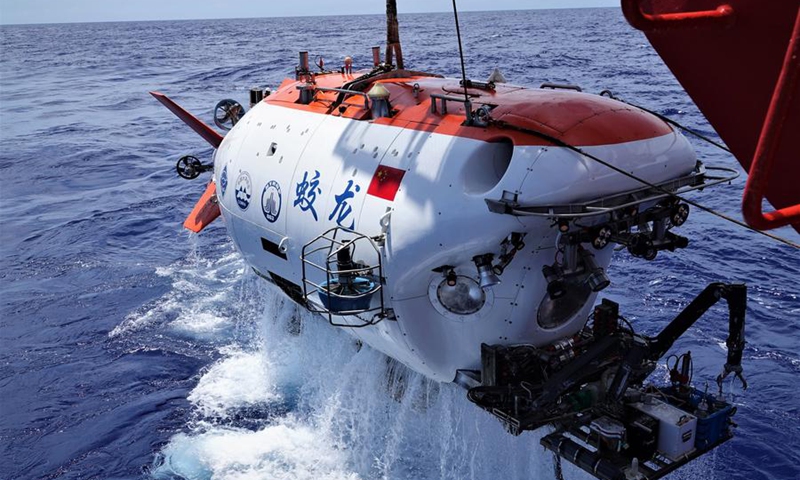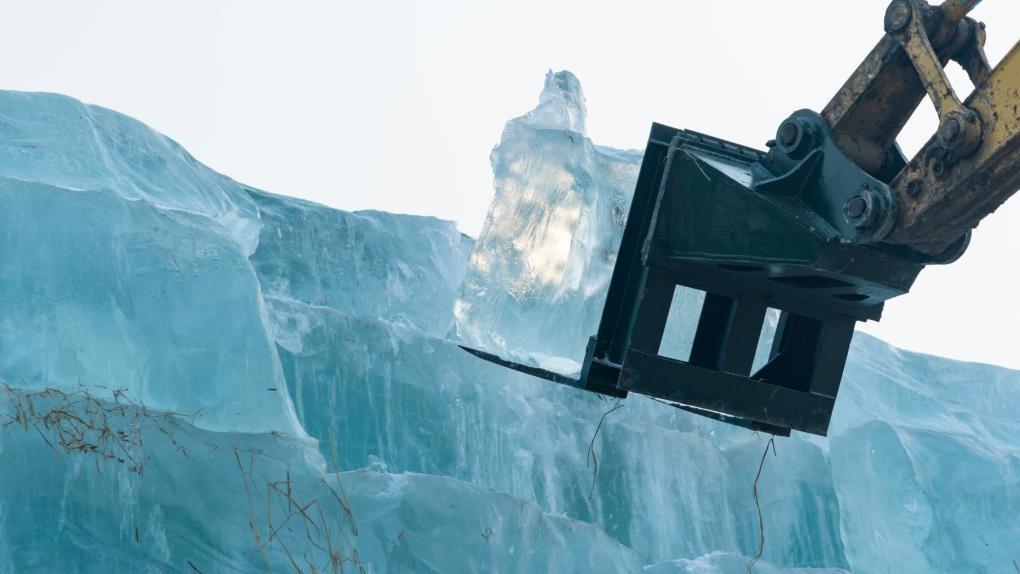China aims to build a new 'air-space-land-sea-network' infrastructure system by the end of the 15th Five-Year Plan period: ministry

China's manned deep-sea submersible Jiaolong completes its 300th dive in the Western Pacific Ocean, Aug. 18, 2024. (Photo: Xinhua)
China aims to build a new "air-space-land-sea-network" infrastructure system and develop a Chinese version of a holographic digital Earth by the end of the 15th Five-Year Plan (2026-30) period, the Ministry of Natural Resources said. The initiative is expected to accelerate the rapid development of new quality productive forces in fields such as geology mineral resources, oceans, forestry and grassland, and geographic information.
The Ludi Tance-1 satellite, independently developed by China, is a key component of the National Civil Space Infrastructure Medium- and Long-term Development Plan. During a recent media briefing, Tang Xinming, a researcher at the National Satellite Remote Sensing Application Center of the ministry, said the project had achieved a breakthrough in China's L-band radar interferometry technology after nine years of R&D, making the satellite "usable" and its data products "highly effective," according to Beijing News.
Prior to Ludi Tance-1, China relied on foreign satellites for InSAR data used in deformation monitoring. Since its launch, Ludi Tance-1 has achieved monthly nationwide full-coverage data acquisition. More than 500,000 scenes of data have been distributed and widely applied across the country, and now support routine identification of geological disaster risks.
At the meeting, Tang Juxing — an academician from the Chinese Academy of Engineering and deputy director of the Chinese Academy of Geological Sciences—said that since the 14th Five-Year Plan (2020-25) period, breakthroughs in copper deposit theories and exploration technologies have led to major discoveries in Southwest China's Xizang Autonomous Region, reshaping China's copper exploration and development landscape and significantly enhancing supply security.
Wang Haibei, deputy general manager of China's BGRIMM technology group, outlined innovations in the extraction and utilization of rare and scattered metals such as gallium, germanium, and indium.
The company has overcome technical bottlenecks in efficiently extracting low-grade rare metals from coal, aluminum, copper, lead, and zinc ores. The comprehensive recovery rate of germanium from coal has increased from 55 percent to over 80 percent, while the recovery rate of gallium, germanium, and indium during lead-zinc smelting has risen by roughly 10 percent.
Breakthroughs were also made in the preparation of high-purity rare metal products and associated core equipment.
Wang Facheng, deputy director of the Marine Engineering Institute of Tsinghua University's School of Civil Engineering, introduced key technologies and applications in subsea pipeline design, manufacturing, and installation.
He noted that these innovations have been successfully applied to 15 major domestic and international engineering projects, including in the East China Sea.
Jiang Lei, deputy director of the Institute of Deep-Sea Science and Engineering of the Chinese Academy of Sciences, reported that from July to October this year, the Deep Sea No.1research vessel carrying the Jiaolongsubmersible completed China's first manned descent in the Arctic, with icebreaking support from Xuelong 2.
The Jiaolongteam conducted 12 dives and performed underwater collaborative operations with the Fendouzhe submersible, pioneering China's dual-submersible cooperative underwater mission model. Fendouzhe's repeated dives under dense sea ice made China the first country in the world to carry out routine manned deep-sea operations in Arctic conditions.
He Kaitao, deputy director of the Science and Technology Development Department of the ministry, said that during the 15th Five-Year Plan, the ministry will intensify efforts in original innovation and key breakthroughs, strategically deploy national major science and technology projects, continue the National Natural Science Foundation's programs in geology and forestry-grassland, and promote the establishment of a new "Ocean and Land" joint fund.
These efforts aim to strengthen organized basic research and accelerate the production, transformation, and application of landmark scientific achievements.
Photos
 Xishuangbanna in SW China's Yunnan builds distinctive modern agricultural system
Xishuangbanna in SW China's Yunnan builds distinctive modern agricultural system Int'l delegation explores organic tea culture in Baisha, S China's Hainan
Int'l delegation explores organic tea culture in Baisha, S China's Hainan Chamber Concert of Chinese Classical Music held at China Cultural Center in Kuwait
Chamber Concert of Chinese Classical Music held at China Cultural Center in Kuwait 27th Harbin Ice-Snow World to officially begin construction in NE China
27th Harbin Ice-Snow World to officially begin construction in NE China
Related Stories
- Deepening cooperation for geological research
- Chinese researchers identify new "geochemical switch" regulating Earth's Climate
- China’s first helicopter-borne electromagnetic detection system completes high-altitude geological survey
- Major uranium deposit discovered in northwest China
- Chinese scientists found for 1st time a 1,360-meter impact crater on a mountain ridge in NE China’s Heilongjiang
- Chinese, foreign scientists to start new expedition into Asia's longest cave
- 3 Chinese sites listed as world geological heritages by IUGS
- Researchers predict landslide displacement with satellite images, machine learning
- Profile: Paleontologist deciphers "characters of the earth" in SW China
- Chinese geoscientists set new record on shelf coring
Copyright © 2025 People's Daily Online. All Rights Reserved.





